#Photovoltaic
Note
Can you help debunk what I have been told that solar panels are bad for the environment and cause more waste because they take a long time to decompose and wear out in a couple years?
Okay, let me try and answer this. Because yes, this is a more complicated issue, than a lot of people make it out to be.
So, let me start with the big thing that gets often overlooked: Without even looking into ressource use, big photovoltaic power plans have definitely a negative environmental impact. Not as a negative as anything fossil energy related, but negative never the less.
With power plants I mean those giant fields where we plaster photovoltaic panels over acres of land, to have a central power plant based around photovoltaic. And while we might not get around some of those big power plants, part of the energy revolution should be to move towards micro grids instead of current macro grids (so, decentralization), hence lowering the need of central powerplants.
Now, a lot of people who are anti-pv - mostly people who are from the fossil fuel lobby, but also some nuclear-lobby folks - tend to exaggerate those negative impacts... But they are still there. (Mostly having to do with depending on the type of pv panel used they can impact the ground temperature - and of course they just disrupt the environment.)
Sooo... Let's get to the raw materials. The important bit in photovoltaic is silicon. And this is one of the good old environmentalist "well actaully" things. Because when I was a kid I got told: "Oh, silicon is never a problem, because it is just sand! We have so much sand!" But of course I learned that it is not quite as easy. Because not all sand is created equal and not all can be used for stuff like concrete (which is shit either way), glass or photovoltaic.
Though still it is not as much of an issue as a lot of rare earth materials. Some of which are currently used in photovoltaic. But here is the other thing...
Photovoltaic is currently one of the fastest developing energy technologies. Basically anything I am gonna tell you here will be outdated next year. I guarantee.
But yes, in the creation of photovoltaic we currently use rare earth metals, that are at times sourced through bad means. Both in terms of it being mined through slave work and through the mining being done in a way that harms the environment. But... for one, we are currently working on reducing the need for rare earth metals in the creation of photovoltaic. And like with nuclear materials: We could mine the materials in a much more sustainable way - both on a social and ecological level. It is just that the current capitalist system has all the incentives to mine those materials wiht exploited workers or even slaves, and to not take care of the waste created in the mining operation.
And this gets us back to the recycling.
Short version: Yeah, we have ways to recycle about 65-80% of the materials in a photovoltaic panel. And like everything else: We are working on it and it will probably go up to 90%. But once again: Like with all recycling the issue is, that recycling materials is way more expensive than getting new materials. Which is why under capitalism all the things we could recycle often do not get recycled.
But it is possible.
tl;dr: Yes, there are drawbacks to photovoltaic, but it is not as bad as many make it seem. And a ton of the drawbacks are not inevitable but only exist because of capitalism.

#solarpunk#photovoltaic#solar#solar power#solar energy#recycling#environmentalism#sustainability#anti capitalism
119 notes
·
View notes
Link
“The French Senate has approved a bill requiring new and existing lots with more than 80 spaces to be at least half covered with canopies of solar panels that sit over the parking spaces. Assuming the bill comes into effect later this year, parking lots with more than 400 spaces must be compliant by 2026; smaller ones with 80 to 400 spaces will be given until 2028.”
“A 2015 study concluded that within California’s cities and other developed areas, there’s sufficient solar development potential to power the state three to five times over.“
“According to a 2021 study Pearce coauthored, installing solar panels over the parking lots of the 3,751 Walmart supercenters spread across the US alone could generate the same amount of electricity to that of around a dozen coal-fired power plants.”
#solar#solar power#solar panels#photovoltaic#france#parking lots#climate#climate crisis#climate change#wired#environment
194 notes
·
View notes
Photo





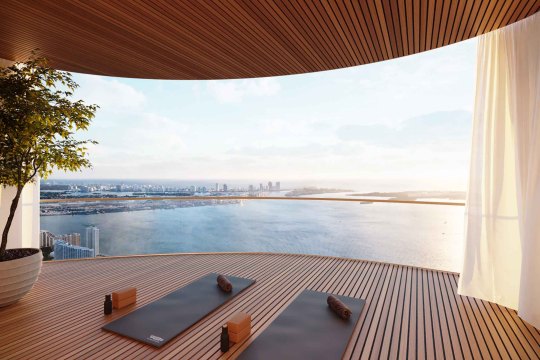




The Residences at 1428 Brickell’s Penthouse, Miami, Florida,
The project, recently announced, is the first project of its kind in the world to integrate photovoltaic glazing within the facade.
Antonio Citterio Patricia Viel,
The Boundary for Ytech
#art#design#architecture#penthouse#florida#miami#eco-friendly#residencial#tower#brickell#antonio citterio#patricia viel#Ytech#luxurylifestyle#luxurypad#luxury homes#luxuryhouses#photovoltaic
102 notes
·
View notes
Photo



Solar Panels (Radiolaria Series)
The Solar Panels (Radiolaria Series) are a collection of functional 100W Photovoltaic generators, engraved with enlarged microscopic images of radiolaria: microscopic sea creatures who construct elaborate mineral skeletons from silica. The Radiolaria were first described, and famously illustrated, by the German naturalist Ernst Haeckel, who coined the term ‘ecology’ in 1866. Recent optical research has shown that certain forms of engraving can increase the efficiency of solar photovoltaic panels, by trapping certain frequencies of light which would otherwise be reflected.
Wonderful project from artist James Bridle @stml. Friend of the blog and author of New Dark Age: Technology and the End of the Future, and Ways of Being.
#james bridle#solar power#solar panels#engraved#engraving#art#photovoltaic#Radiolaria#ecology#gallery
93 notes
·
View notes
Text

Check out them curves 👷🏽♂️
#perspective#photography#my photos#photographers on tumblr#adventure#nature photography#norcal#bay area#bayarea#northern california#nature#solar power#solarpunk#photovoltaic#landscape photography#photoblog#Los Baños
17 notes
·
View notes
Text

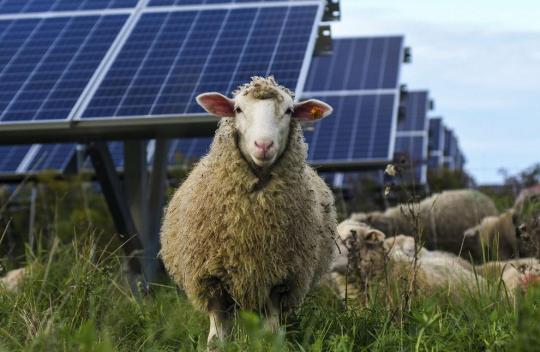




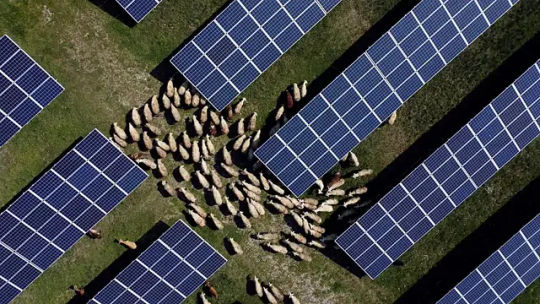

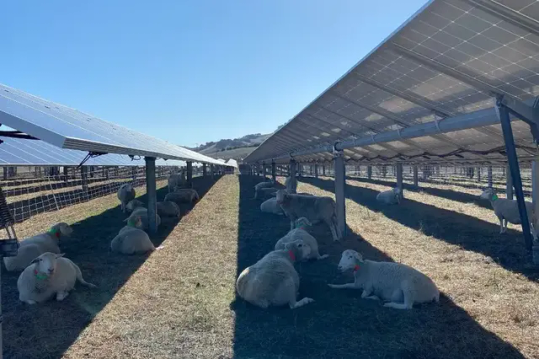
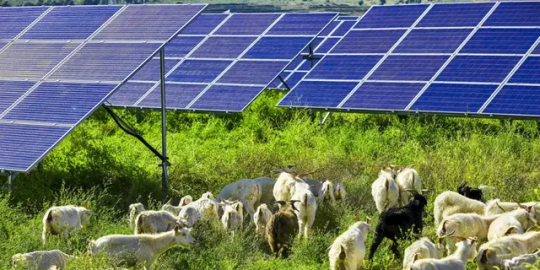

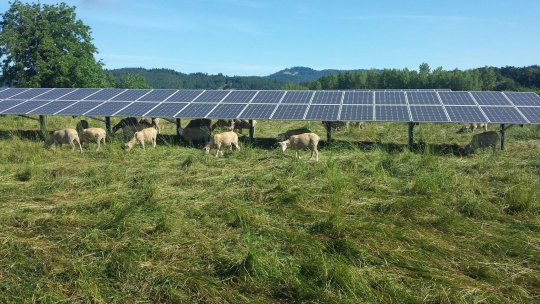
Sheep of a solar-farm flock together charmed
#solar farm#solar sheep#solar#sheep#environment#Solarpunk#inspiration#solar grazing#solar farming#solar farmer#agrivoltaics#agricola's#photovoltaic#sheepvoltaic#poem#climate#climate hope#vibe#solar vibe#aesthetic#solar flock
8 notes
·
View notes
Text
Photovoltaic balcony energy storage power supply demonstration diagram
2 notes
·
View notes
Text
Solar power - taste the sun
Without the sun, we would be (frozen) toast. That much is for sure. The sun directly or indirectly powers most forms of renewable energy: Without the sun, there would be no water cykle, so no water power. The differences in temperature and air pressure, set in motion by the energy of the sun, creates wind. And of course, we can use the sun in an array of ways to help us in our daily lives.
"The power of the Sun at the Earth, per square metre is called the solar constant and is approximately 1370 Watts per square metre (W/m2)." (https://www.sws.bom.gov.au/Educational/2/1/12, Australian Space Weather Forecasting Centre). That is a lot of watts per square meters. The number differs by a few percent depending on time of the year and our actually elliptic orbit around the sun, but there is still a lot of energy to use.
We can use the thermal energy and the light waves of the sun to our advantage in the following ways:
Active solar heating uses solar collectors, water pipes go through a glazed or unglazed panel. The panel is dark coloured to absorb the most of the solar power. The water in the pipes is heated up and can be used for heating.
Passive solar heating uses the warmth of the sun without a panel, it is for example used in passive houses. The heat from the sun enters the house through big windows, the house is so well insulated that it keeps that warmth.
Daylight can be used as a source for light to avoid artificial lighting.
Concentrated solar collectors contain a parabolic structure that concentrates the solar rays in one point. In that point, there is a pipe containing water or a high temperature heat transfer fluid, for example mineral oil. The fluid will then as well be used to create stream for energy production.
Power Towers are... towers. Surrounded by mirrors that all reflect sunlight onto the receiver on the top of the tower. There is a tank containing either water, creating steam for direct energy production, or salt. The concentrated solar power is enough to melt that saltv (melting point is often at over 200°C) and it can be used to either produce steam for electricity directly or it can be stored for a few hours, making 24-hour energy production possible.
Photovoltaic can be used to produce electricity directly from sunlight. It is a pretty cool process, so I´ll explain it a bit more extensive. Photovoiltaic cells have two layers of silicon, a very common mineral, divided by an insulator. Silicon is a semiconductor, that is a material that normally doesn´t have free electrons, which make up electricity, but if you add a bit of energy, it frees electrons and makes an electrical current possible. Now, the two layers of silicon are also "doped" with impurities, the upper layer with, for example, phosphorus, which adds free electrons, and the lower layer with, for example, boron, which adds a slight positive charge. The upper layer is called n-type silicon, the lower layer p-type silicon. If the sun shines on the photovoltaic cell, it frees the electrons from the upper layer. They are naturally driven to the lower layer, which is lacking electrons, but there is an insulator between them. Add a cable that´s conducting electricity, lay it through your house, and connect the upper to the lower level. If the sun hits the solar panel, it frees the electrons, they are travelling through your cable, bam! Electricity! Since that was a bit complicated, here is a picture:

(Source: Cosmos Magazine)
The perk about photovoltaic is that it is made from very common materials and that it can be put virtually everywhere. The downsides of it, and most other forms of solar energy is the obvious: It depends on the sun shining. Only pretty big photovoltaic panels work if it´s cloudy and there are places on the earth where the amount of sunlight varies strongly during the year. I, for example, am living in Sweden and the amount of sunlight hours (if they exist at all) during winter is so small and the angle of the sun so low that solar power just won´t cut it.
However, there are places on the earth where a lot could be done with solar power. Only a small part of the Sahara desert would be needed to cover Africa´s and Europes entire need for energy. Only a small part of Nevada would be enough to cover the US´s. Then of course, the question is how to transfer that energy and the whole power grid would have to be worked over, but sooner or later, we would have to do that anyways. There is a LOT of potential for solar power and the prices for it have gone down significantly in the past years:
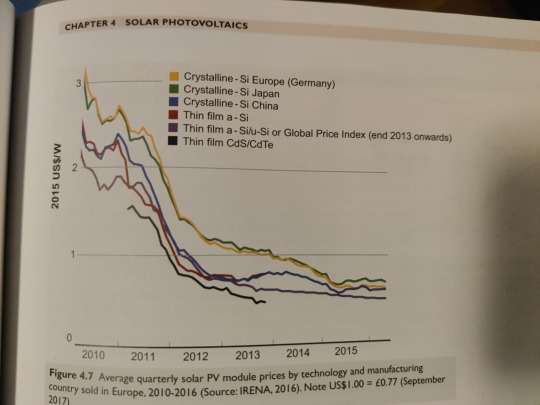
(Source: Peake (2018): Renewable Energy. Power for a sustainable future.)
So that was a bit about solar power. We can hope that this will be a big part of our way to a better, greener, brighter future.
Source for pretty much all of it: Peake (2018): Renewable Energy. Power for a sustainable future. Fourth edition. Oxford university press.
#environmentalism#science#solar power#photovoltaic#nature#climate change#climate action#hope for the future#environmetal engineering#engineering
2 notes
·
View notes
Photo

Just the thing when one is out and about, inconveniently far away from neighborhood réchargés: a “ready van.” I see these little vans (sometimes bicycles and trailers) stationed at the periphery of large common spaces or in the midst of large event gatherings, rooftop photovoltaics deployed and providing a convenient boost to any they might need one. . #robotoftheday #mylifewithrobots #robot #robotart #robotartist #robotics #robotlife #recharge #battery #power #electricity #urban #foodcart #cafe #tinyvan #foodcart #foodtruck #solarpower #photovoltaic #chargingstation #sketch #art #illustration #sketchbook #alcoholmarkers #copicwithus #copicmarkers #copicmarker https://www.instagram.com/p/Co9HpkcLuuT/?igshid=NGJjMDIxMWI=
#robotoftheday#mylifewithrobots#robot#robotart#robotartist#robotics#robotlife#recharge#battery#power#electricity#urban#foodcart#cafe#tinyvan#foodtruck#solarpower#photovoltaic#chargingstation#sketch#art#illustration#sketchbook#alcoholmarkers#copicwithus#copicmarkers#copicmarker
15 notes
·
View notes
Text
Let's talk Energy Mix

Let me talk about the energy mix for a moment - because I feel a lot of people are very unsure, how a renewable energy grid would work in practice.
So, let me get out my electrician gear and go very quickly through the different energy types that we would probably have within a Solarpunk world or something along the line. Or rather: What we might have in the future, if our governments actually fucking cared to go carbonfree.
Photovoltaic (aka Solar). Now, let me make one thing clear: Technically Photovoltaic and Solar are two different things. Photovoltaic uses certain materials that can build electricity when they interact with Photons, while Solar uses the sun's heat radiation. What most people think of as "Solarpower" is photovoltaic. This technology has made a lot of advances recently, making the panels so much more efficient than they were only a few years ago. By now photovoltaic roof tiles can actually provide enough energy for the house even during cloudy days and even further up north. Of course they cannot create enough energy during the night. While production is not 0, it is by far not enough.
Wind turbines. Currently wind turbines are making up a lot of the renewable energy mix in many countries, like my own (Germany). And for good reason. They are so darn efficient. Especially off-shore energy. While they are right now not useful for personal energy production (because turbines are fucking loud up close - only up close), they are really good at keeping the grid fed. Maybe just a bit too good.
Other forms of Wind Power. I really do not want to go too deeply into this topic. But there are currently also other forms of wind powered generators being researched. Including some that could be put onto houses. (If you want me to gover those more, just send me an ask.)
Hydro Power. Now Hydro Power, so water based power generation, has two big kinds of being used. One is by channeling the power of rivers through a generator - the other is as the currently simplest form of energy storage: If you have too much energy in your grid at any given time, pump water into a reservoir and if you need that power again, let it go through a generator. Please note though: Environmentally Hydro Power is definitely the kind of renewable power with the worst environmental impact.
Other forms of water based power generation: Currently we are experimenting a lot with getting power from the ocean. For example through tidal generators or wave generators. So far, though, these methods are only experiments, not fit for large scale production.
Geothermal Power. In a lot of areas with Geothermal activity we can also use the heat of the earth to create steam, which we then can use to power generators as well. This is especially handy in places like Iceland, that are geothermically very active, but also do not get a lot of sun half of the year and are not ideally suited for wind power.
One thing that should be noted is, that very probably we are still gonna need nuclear power as an emergency tool.
One thing that definitely needs to change, though, is how we build our energy grids. Currently we are relying a lot on macro grids, that is grids, where a few central power plants generate all the power for a large area. This does not work out well currently, based on the fact that a lot of renewables work best, if you have smaller, further distributed power plants.
This creates the need for micro grids, that are also better suited to just... Not create large scale blackouts, as the US experiences them semi-frequently.
Again, if you want me to talk more about that, I can totally do, just... send me a message.
But what you really do not need to be concerned about is the entire idea of "what do we do at night"? We have ways to deal with that. Even now. Let alone in 10 years. This area of science is currently really moving forward in long strides!
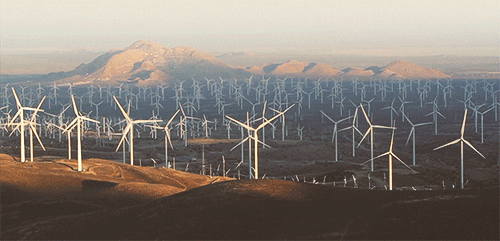
#solarpunk#lunarpunk#renewables#renewable energy#solar power#solar energy#photovoltaic#wind power#hydro power#energy mix
87 notes
·
View notes
Text

Northern New Mexico 🔋👷🏽♂️
#solar powered#solar energy#photography#nature photography#landscape photography#land back#renewable energy#engineering#engineer#photovoltaic#new mexico#gods country#taos#Solar plus storage#👷🏽♂️
7 notes
·
View notes
Text
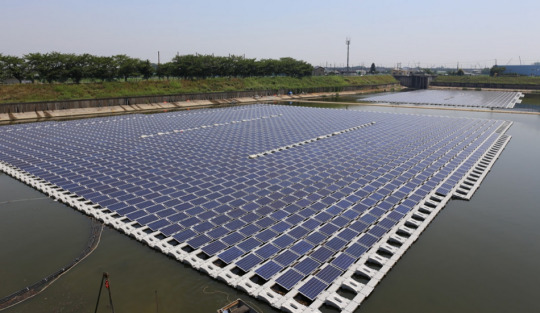
Indian National Hydro Power Corporation (NHPC) is planning a 50 MW photovoltaic project that will be the world’s largest freshwater floating solar power plant
22 notes
·
View notes
Text
DIY Tricks Solar Panel Installation Project Renewable Energy Tips Technial Team
TIp: Solar Panel Installation Info
#Solar Panel#Solar Panel Installation#Solar Project#Electricity#Renewable Energy#Lifehack#DIY#DIY Solar#Photovoltaic
12 notes
·
View notes
Text
stop me from trying to turn your name into a song I’d play around the city so every street will know my prayer.
—k.m.k.
#photovoltaic#kirscribbles#poetry#dead poets society#poemsdaily#poems#poemsporn#poemsociety#sad poem#new poets on tumblr#new poets community#new poets society#poemsworld#new poets corner#spilled ink#spilled thoughts#writblr#heartbreak#love poem#spilled writing#spilled poetry
4 notes
·
View notes
Text
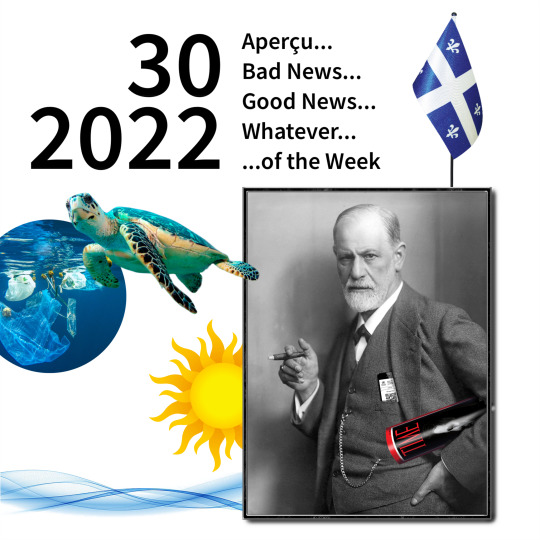
2022 / 30
Aperçu of the Week:
“Work expands so as to fill the time available for its completion.”
(British historian C. Northcote Parkinson 1955 on bureaucrazy)
Bad News of the Week:
Plastic waste. I'm not talking about the small problem of bags full of recyclable packaging standing in our basement until I get to the recycling center, which is somehow only open when I have to work. It's the big problem that this garbage has become in the world's oceans.
There are currently an estimated 650 kilograms of plastic waste in our environment for every living person. Of this, up to 150 million tons float in the sea, mostly broken down into microscopic particles. And it's getting more and more: the Danube alone flushes 4,200 kg of plastic into the Black Sea every day. Asian rivers many times that amount. The consequences are fatal.
Animal keeper Sarah Male from Australia's Taronga Zoo looks after a small green sea turtle that was found on the beach in Sydney. Her entire gastrointestinal tract was filled with plastic, it took a full six days (!) at the animal shelter before she excreted none. She almost starved to death, although she ate - only unfortunately she cannot distinguish between food and garbage.
Since the food chain reaches all the way up to humans, they also consume more and more plastic particles: an average European ingests about 5 g every week. That doesn't sound like much, but with a life expectancy of 79 years, it adds up to more than 20 kg. What effects this has on health is still largely unexplored. But chemical compounds that the human organism is not familiar with cannot remain without consequences. Individual components that the body extracts from microplastics are regularly already detected in the bloodstream.
This cannot be good. I would almost like to hope that there will soon be dire findings that drastically demonstrate to humanity what we actually already know: irresponsible behavior cannot remain without consequences within one system. We are to blame ourselves. And should therefore actually have to suffer just as much as the little green sea turtle.
Good News of the Week:
In the years 2018 to 2021 alone, the direct consequences of man-made climate change had cost Germany 80 billion euros - heat waves, flood disasters, forest fires, storm damage, crop losses. Many of the damages cannot even be quantified, such as the loss of biodiversity. But we can certainly quantify the fact that we are paying for our inaction. For example, a wind turbine with an output of 5 megawatts costs about 4 million euros. So we could have built 20,000 of them for these 80 billion in damages. And today we would not only be energy independent, but also 100% sustainable. Someone please explain to me why we don't just do that.
But let's get to the positive, which is currently being lost in the shadow of the gas crisis. The Saturday before last, at 1 p.m., there was quite a sensation: for the first time, solar power with a capacity of more than 40 gigawatts was fed into the public power grid in Germany. This means that almost 80 percent of the electricity consumed in Germany at that time was generated by photovoltaic. Okay, on a Saturday in July, the energy consumption of German industry certainly amounts to a fraction of a Tuesday in October. But still. It's the right way to go.
And this way is worthwhile not only for the environment, but also for the economy. A recent study by Allianz predicts that achieving the Paris climate targets by 2035 will develop considerable economic momentum. 40 billion in additional value added each year is significantly more than the consequential climate damage costs mentioned at the beginning. And 440,000 additional jobs are significantly more than those that will be lost by winding down fossil fuel generation and nuclear power. I've always been bad at math. But it's just about enough for this: Climate protection pays off. And that's why it will happen. Let's go!
Personal happy moment of the week:
Since Friday evening, I've been enjoying a visit from afar. In two ways: first, my wife's friend is from Montréal, and second, she just arrived from Seoul. And takes the trouble to make a stop over at our place. It's fun to listen to "le Québecois" at home. And to have a chance to rediscover the beauty of home through her eyes: the view of the Alps, the sun on the lake, the selection at the bakery, the traditional music at the fairground, the architecture of the past, the art of brewing beer, the sky in Bavarian white and blue. Simply beautiful.
I couldn't care less...
...that the pilots of Lufthansa have voted with almost 100% for a strike. After just the ground staff with its strike (each division has its own union) was responsible for 1,000 canceled flights. Where the billions of the German state in the Corona crisis of aviation has saved all these jobs. And the gentlemen - and few ladies - of the skies already get more than 200,000 Euro annual salary. My sympathy is limited. My understanding too.
As I write this...
...I am waiting for the kickoff. Of a final. In which Germany can become European champion tonight. In soccer. Why many are surprised now is simply because these are "only" the UEFA championships for women. Which get far less attention than their male counterpart. Too bad. But at least free TV is broadcasting live. And German Chancellor Olaf Scholz will be there in London's Wembley Stadium, the cathedral of European soccer, to watch our girls beat the English. Hopefully. At least I'm keeping my fingers crossed.
Post Scriptum:
Unrest is spreading. Those who previously knew supply chain problems only from the business news can now see them - on sometimes empty supermarket shelves. The reduced gas flow from Russia is reflected in firewood - because there is none left. We, too, wanted to light our fireplace next winter not for ambience, but as a source of heat. But not even our neighboring farmer can help us out.
In general, there is more and more "prepping against Putin". I, too, have already managed to reduce my average shower time to two and a half minutes. When it comes to stockpiling food, however, we are lagging far behind - at least according to the German Federal Office of Civil Protection and Disaster Assistance. It recommends keeping a permanent supply of food that will last for ten days without the need to go shopping. Specifically, 14 kilograms of food and 20 liters of water per person. I'm thinking of taking wine instead. It lasts longer and has a more calming effect in times of crisis.
#thoughts#aperçu#bad news#good news#news of the week#happy moments#politics#parkinson#bureaucracy#plastic#plastic waste#ocean#sea turtle#sydney#photovoltaic#solar power#climate change#quebecois#lufthansa#kickoff#soccer#championship#russia#putin#prepping#strike#crises#climate protection#paying off#bavaria
2 notes
·
View notes
Link
Dutch renewable energy company Photon Energy will build three new solar farms with a combined capacity of 6 MWp, generating roughly 9.6 GWh annually for the Oltenia region.(..) The company is currently developing photovoltaic projects with a total capacity of 236 MW in Romania.
#Romania#photovoltaic#solar power#renewable energy#fossil fuel phase-out#energy safety#energy independence#Dutch#solar farm#Photon Energy#Eastern Europe#defense of europe
3 notes
·
View notes